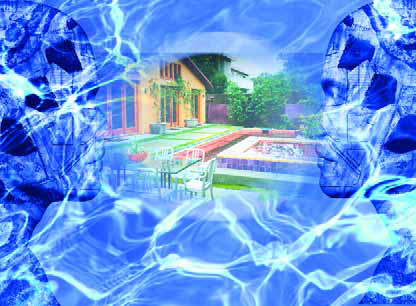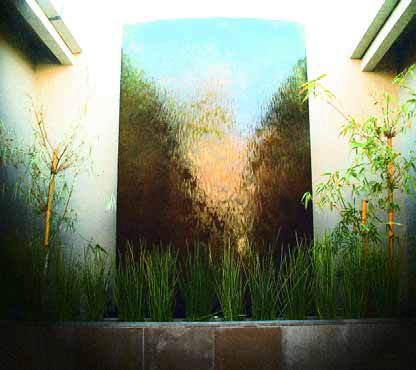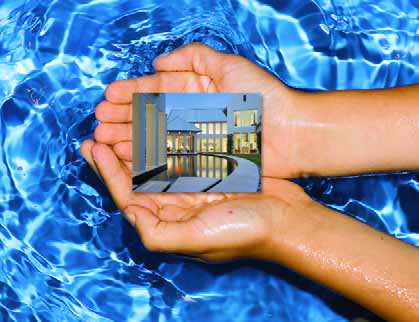ARTICLES
Advance Search
Aquatic Health
Aquatic Health, Fitness & Safety
Around the Internet
Aquatic Culture
Aquatic Technology
Artful Endeavors
Celebrity Corner
Life Aquatic
Must-See Watershapes
People with Cameras
Watershapes in the Headlines
Art/Architectural History
Book & Media Reviews
Commentaries, Interviews & Profiles
Concrete Science
Environment
Fountains
Geotechnical
Join the Dialogue
Landscape, Plants, Hardscape & Decks
Lighter Side
Ripples
Test Your Knowledge
The Aquatic Quiz
Other Waterfeatures (from birdbaths to lakes)
Outdoor Living, Fire Features, Amenities & Lighting
Plants
Ponds, Streams & Waterfalls
Pools & Spas
Professional Watershaping
Structures (Editor's Notes)
Travelogues & History
Water Chemistry
WaterShapes TV
WaterShapes World Blog
Web Links
Around the Internet
Aquatic Culture
Aquatic Technology
Artful Endeavors
Celebrity Corner
Life Aquatic
Must-See Watershapes
People with Cameras
Watershapes in the Headlines
When it comes to design in the watershaping industry, I see all of us who creatively put pencils to paper as being in states of transition - particularly where I live in the pool/spa realm, where design has traditionally been used as a sales tool and charging for design work was largely unheard of as a service above and beyond construction. All that is changing - and for the better, I think. But with more and more of us gravitating in the direction of professional design consulting either within companies or on our own, what's to guide us as we reach toward that goal? A book I've just read may be a big help: Andrew Pressman's Curing the Fountainhead Ache: How Architects and Their Clients Communicate (Sterling Publishing Co., 2006) has led me to recognize that good design is mostly about establishing effective dialogue with clients. Indeed, he has convinced me that the way I talk to my clients - and, as important, how well I listen to what they have to say in return - has everything to do with
When it comes to design in the watershaping industry, I see all of us who creatively put pencils to paper as being in states of transition - particularly where I live in the pool/spa realm, where design has traditionally been used as a sales tool and charging for design work was largely unheard of as a service above and beyond construction. All that is changing - and for the better, I think. But with more and more of us gravitating in the direction of professional design consulting either within companies or on our own, what's to guide us as we reach toward that goal? A book I've just read may be a big help: Andrew Pressman's Curing the Fountainhead Ache: How Architects and Their Clients Communicate (Sterling Publishing Co., 2006) has led me to recognize that good design is mostly about establishing effective dialogue with clients. Indeed, he has convinced me that the way I talk to my clients - and, as important, how well I listen to what they have to say in return - has everything to do with
Tackling large, custom watershaping projects is all about the synergy between my clients and me: There simply must be a fit, or the process just won't work. Last month, we discussed the importance of setting up proper expectations from the moment a client makes initial contact and you pick up the phone. This time, I'll cover what happens if the early stages of the relationship go well enough that a face-to-face meeting is in order. This is the session during which I discover whether or not there's truly a
Tackling large, custom watershaping projects is all about the synergy between my clients and me: There simply must be a fit, or the process just won't work. Last month, we discussed the importance of setting up proper expectations from the moment a client makes initial contact and you pick up the phone. This time, I'll cover what happens if the early stages of the relationship go well enough that a face-to-face meeting is in order. This is the session during which I discover whether or not there's truly a
Many watershapers have a single-minded focus, doing all they can to deliver quality shells and surrounding decks to their clients. Quite often, however, that narrow focus means that inadequate space is left for planting - a problem I face quite often as a landshaper. It's clear in many cases that no thought at all was given to the landscape - and certain that no design professional was consulted before laying out and installing the hardscape. The result all too often is that there simply isn't enough room to allow for good-size planter beds. I often find myself rolling my eyes and lamenting the missed opportunities to
Many watershapers have a single-minded focus, doing all they can to deliver quality shells and surrounding decks to their clients. Quite often, however, that narrow focus means that inadequate space is left for planting - a problem I face quite often as a landshaper. It's clear in many cases that no thought at all was given to the landscape - and certain that no design professional was consulted before laying out and installing the hardscape. The result all too often is that there simply isn't enough room to allow for good-size planter beds. I often find myself rolling my eyes and lamenting the missed opportunities to
It's a given that human beings enjoy being near water. That's why waterfront property generally comes at a premium and beaches are a favored destination for those who live inland. Quite frankly, it's also why the watershaping industry exists: Even if there isn't necessarily an overwhelming desire to get wet, the desire for proximity to water is almost universal. This built-in need to be close to water is, I believe, resulting in an exciting trend that seems to be taking hold and is in some cases redefining the role that water plays in the environment: More and more often, we designers are being asked to
It's a given that human beings enjoy being near water. That's why waterfront property generally comes at a premium and beaches are a favored destination for those who live inland. Quite frankly, it's also why the watershaping industry exists: Even if there isn't necessarily an overwhelming desire to get wet, the desire for proximity to water is almost universal. This built-in need to be close to water is, I believe, resulting in an exciting trend that seems to be taking hold and is in some cases redefining the role that water plays in the environment: More and more often, we designers are being asked to
Anyone who's a parent knows that taking pride in their children's accomplishments and personal growth is one of life's greatest joys. In my case, that pleasure has been one of the defining factors of my existence for the past twenty-plus years - ever since the day my son Brett Herman was born and was joined four years later by his sister, Amanda. I know that I'm right in line with other parents who call their children
Anyone who's a parent knows that taking pride in their children's accomplishments and personal growth is one of life's greatest joys. In my case, that pleasure has been one of the defining factors of my existence for the past twenty-plus years - ever since the day my son Brett Herman was born and was joined four years later by his sister, Amanda. I know that I'm right in line with other parents who call their children

















